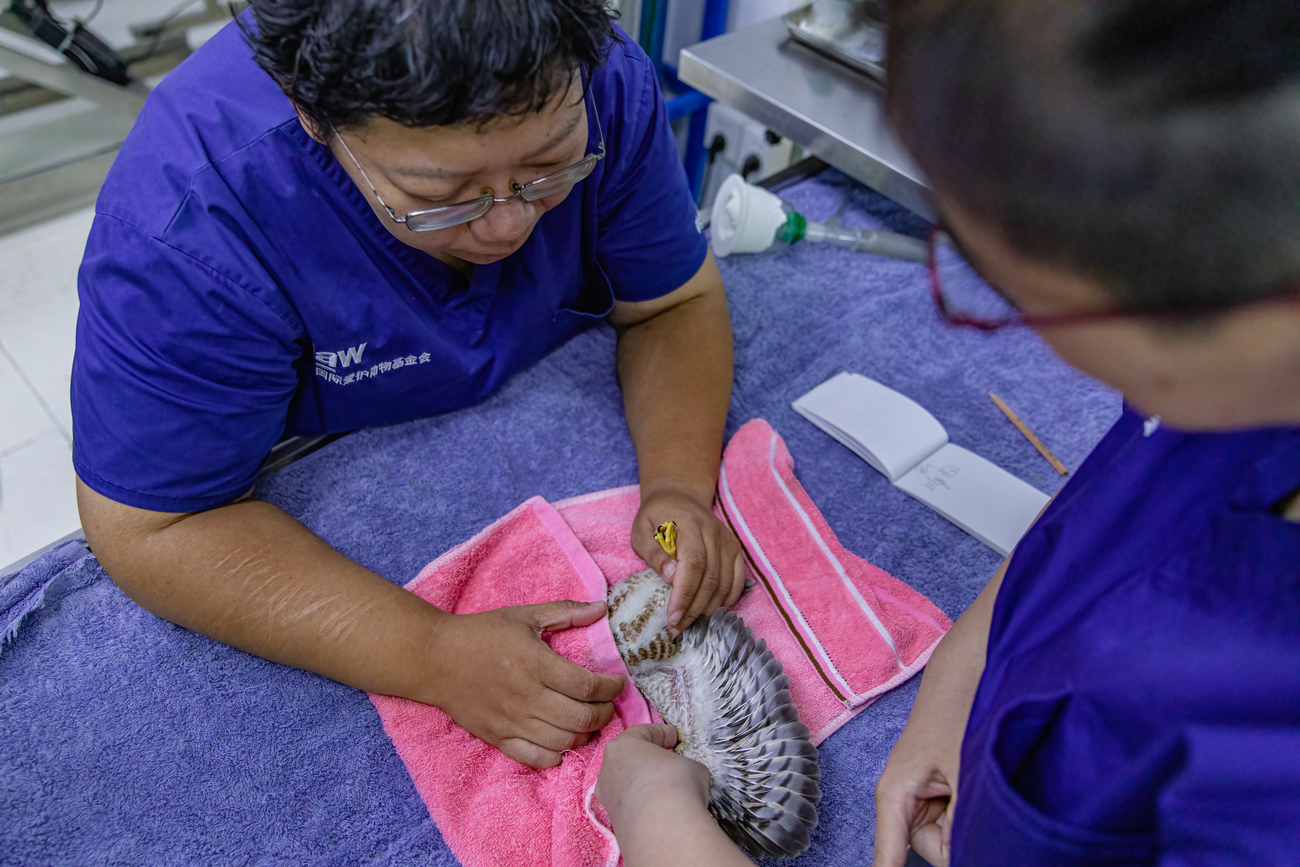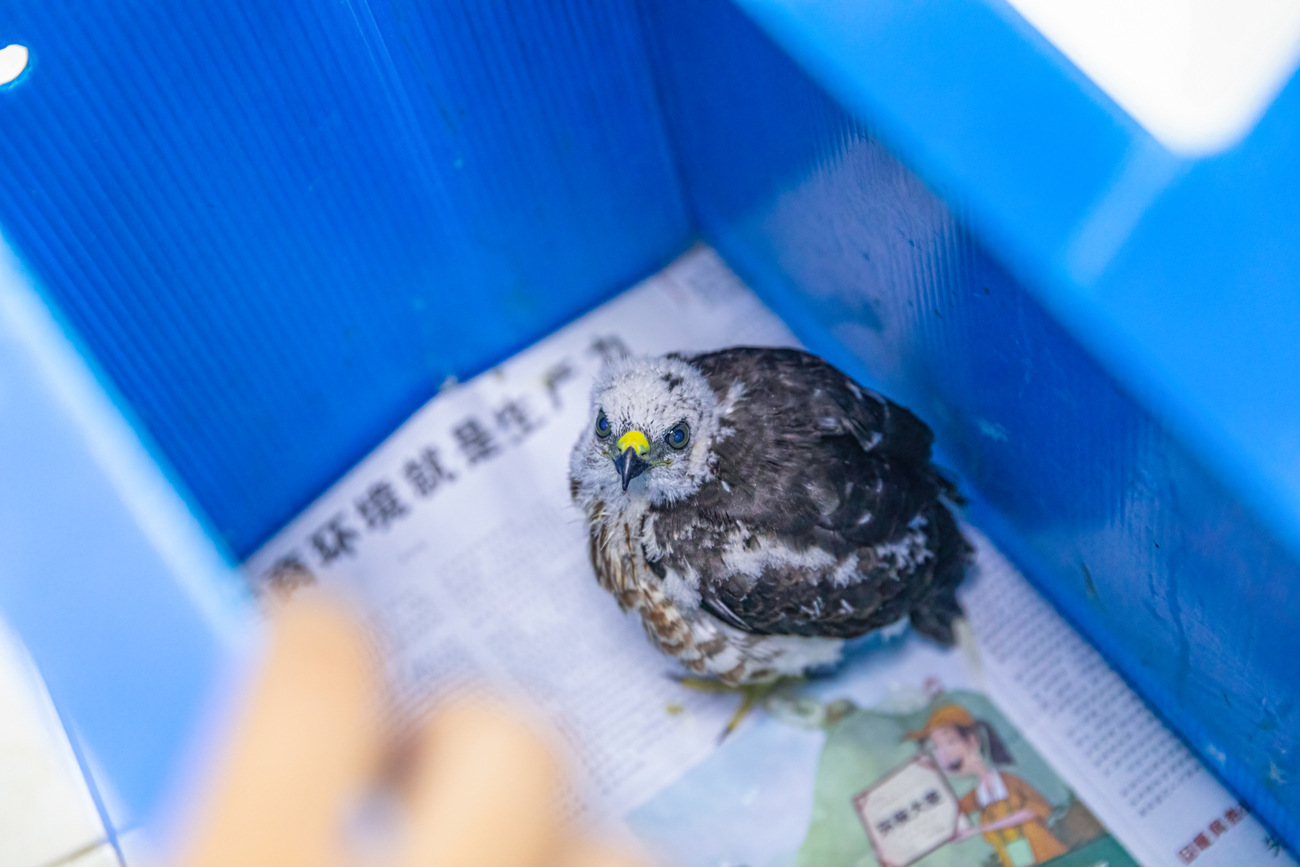Beijing Raptor Rescue Center - China
Birds of prey are falling prey in ChinaIFAW rehabilitates birds in wake of record-breaking rainfall in Beijing
IFAW rehabilitates birds in wake of record-breaking rainfall in Beijing

Beijing suffers record rainfall
Between 29 July and 2 August, Beijing experienced its heaviest rainfall since records began 140 years ago, amounting to 744.8 millimetres of rain. Infrastructure has been damaged in many places, and as of 9 August, 33 people had been killed due to the weather, 18 were missing in Beijing, and more than 52,000 had relocated. Nearly 1.29 million people have been affected by the rainfall.
In some places the water—now hazardous and containing dead livestock—is still about 1.5 metres deep.
IFAW is working to support the care of 79 birds at our Beijing Raptor Rescue Center (BRRC)—this number is particularly high because it is peak rehabilitation season. Since the storm began, we have taken in five affected raptors, including a baby Chinese goshawk. Two birds, a baby black kite and an Eastern red-footed falcon, were unfortunately dead before they arrived at the Center.

Rescuing and rehabilitating birds at BRRC
On 1 August, as the rain gradually lightened, BRRC rehabilitators drove two hours to the Miyun district of suburban Beijing to pick up a baby Chinese goshawk that had been rescued by local villagers. After the villager found this goshawk in a watercourse during a walk, he and his neighbors placed it in a cardboard box and fed it with pork.
The same day, the BRRC also took in a common kestrel. The rescuer found it soaking wet and lying on the ground, so she took it home for shelter. After discovering that it couldn’t fly away even after its feathers had dried, she brought the raptor to BRRC. On 2 and 5 August, BRRC also received two Eastern red-footed falcons and one common kestrel, all of which were unable to fly.
These birds underwent comprehensive examinations at BRRC, and no injuries were found. Unfortunately, one Eastern red-footed falcon did not survive due to hypothermia. The other four raptors are in relatively stable condition thanks to their timely rescues. They will be released back to the wild once they can survive on their own.

Equipping the shelter
In addition to rescuing birds affected by rain, BRRC prioritises the safety and well-being of all the raptors they take in. Ahead of the rainy season, they provided wood canopies for all outdoor rooms to shelter the raptors from heavy rains and equipped each indoor and outdoor room with a drainage system to prevent water accumulation and ensure a dry and comfortable environment. The rehabilitators also use HD cameras supported by Uniview to remotely monitor the daily conditions of the raptors through their mobile phones from the convenience of their homes. Lastly, they fixed leaking issues in the operation room and sealed off rooftop cracks in anticipation of heavy rain. These efforts have resulted in a safer and more comfortable environment for both the raptors and the rehabilitators at BRRC.
However, it is crucial to recognize that reactive measures alone are not enough. Birds like the Chinese goshawk, common kestrel, and Eastern red-footed falcon are among the countless species that are vulnerable to such severe disruptions in their habitats. As their homes are threatened or destroyed by extreme weather, their survival becomes increasingly precarious. It has never been more important to prioritise nature and wildlife protection.
Climate change impacts weather and wildlife
Climate change is causing shifts in weather patterns and intensifying extreme weather events worldwide. As a result, we are witnessing more frequent and severe storms, floods, heat waves, and other natural disasters.
The recent rain in Beijing put the city on the highest-level red alert for flooding and caused the heaviest rainfall and winds the area has experienced in the past decades. These events are consistent with the patterns we’ve witnessed due to climate change.
Climate change alters entire ecosystems along with all the plants and animals that live there. Increases in temperature could trigger the collapse of fragile ecosystems and huge waves of extinction—and many of these animal and plant species can help us mitigate climate change themselves. This is why IFAW is committed to protecting biodiversity in our shared effort to shape a future where people, animals, and the planet can thrive.
Related content
every problem has a solution, every solution needs support.
The problems we face are urgent, complicated, and resistant to change. Real solutions demand creativity, hard work, and involvement from people like you.